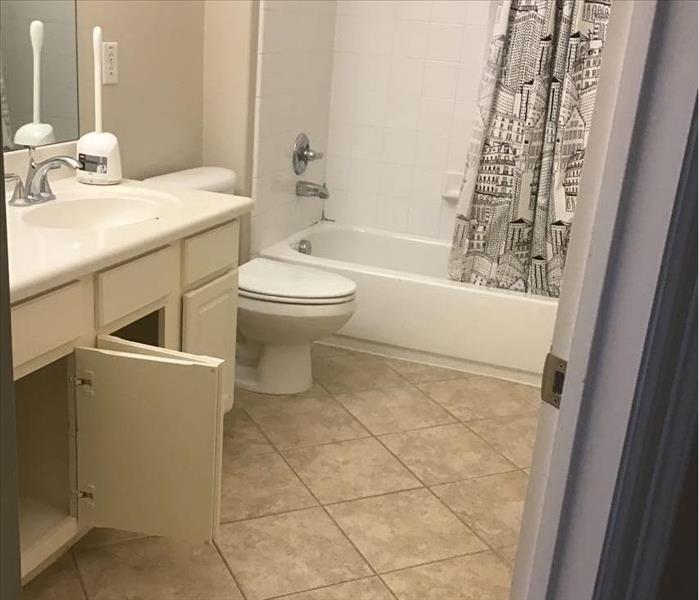
Step 4: Drying and Dehumidification
Our Water Damage Restoration Process
We’re still not quite done, even though the water has been extracted. A surface may appear dry, but when it’s felt, it’s still wet to the touch. Almost all flooring and building materials are porous, which means they can retain water. If these materials aren’t dried properly, they can break down, warp, and even mold. We use two pieces of equipment to dry your home: air movers and dehumidifiers. Air movers are like special fans that move air along the surface whether it’s a floor, wall, or ceiling. We put them in strategic spots around the affected areas – we want to make sure we get every inch dry. Dehumidifiers are set up to lower the humidity of the room, they pull in the cool moist air and replace it with warm dry air which in turn gets your property dry faster.
Drying / Dehumidification
Our Professionals will use room measurements, temperature, and relative humidity to determine the optimal number of air movers and dehumidifiers to dry your home or business. We’ll carefully monitor the progress using moisture meters until the materials return to acceptable drying goals.
- Use Dehumidification Equipment
- Use Monitoring Equipment to Track Progress
Monitor Floor and Walls
We check the moisture levels to monitor the drying process.
- Monitor Floors
- Monitor Walls
Drying Equipment
- Industrial-grade dehumidifiers help prevent secondary water damage like swelling and warping of floors, walls, and furniture.
- High-speed air movers create airflow across walls, carpets, pads, and furniture, which accelerates the evaporation of moisture.






 24/7 Emergency Service
24/7 Emergency Service




